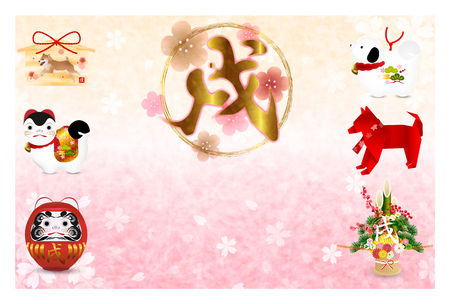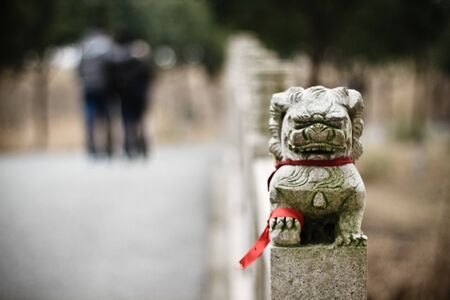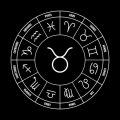1. Introduction to Feng Shui in Garden Design
Feng Shui, an ancient Chinese practice, is all about creating balance and harmony in the spaces where we live, work, and relax. While many people are familiar with using Feng Shui principles inside their homes, these ideas can be just as powerful when applied to your garden. In fact, blending Feng Shui tools and symbols—like wind chimes, statues, and natural elements—into your outdoor space can help you create a peaceful retreat that feels welcoming and uplifting.
In American garden culture, we often value personal expression, comfort, and a connection to nature. By understanding the basics of Feng Shui philosophy, you can design a garden that not only looks beautiful but also supports your well-being. This approach encourages thoughtful placement of objects and plants to enhance positive energy flow (called “chi”) throughout your yard or patio.
What Is Feng Shui?
At its core, Feng Shui is about arranging your surroundings in ways that promote harmony between you and the environment. It uses principles like the five elements (wood, fire, earth, metal, and water) and the concept of yin and yang (balance between opposite forces). When you apply these ideas to your garden, each feature—from a bubbling fountain to a sturdy stone statue—serves a purpose beyond decoration.
Why Apply Feng Shui to Your Garden?
Using Feng Shui outdoors helps create a space where you can relax, recharge, and enjoy nature. It’s not just about superstition; its about making intentional choices that reflect what feels good for you and your family. Whether you have a small backyard or a large front lawn, Feng Shui tools and symbols can be adapted to fit any size or style of American garden.
Common Feng Shui Tools & Symbols for Gardens
| Tool/Symbol | Purpose in Feng Shui | Popular Use in U.S. Gardens |
|---|---|---|
| Wind Chimes | Attract positive energy; disperse negative energy | Hung on porches or trees for gentle sound and movement |
| Statues (e.g., Buddha, animals) | Represent protection, wisdom, or prosperity | Placed at entrances or focal points for symbolism |
| Water Features (fountains/ponds) | Enhance flow of wealth and tranquility | Ponds or small fountains near seating areas |
| Stones & Rocks | Create grounding energy; represent stability | Used as borders or accent pieces along walkways |
| Plants & Flowers | Add vitality; strengthen specific areas of life based on color/type | Diverse plantings for visual appeal and meaning |
Applying Feng Shui Principles: Simple Tips
- Balance: Mix different shapes, sizes, and colors to achieve harmony.
- Flow: Arrange paths so they gently curve rather than run straight.
- Cleansing: Keep areas tidy to prevent stagnant energy.
- Intention: Choose symbols that resonate personally—whether it’s a meaningful statue or favorite wind chime sound.
This introduction lays the foundation for exploring how specific Feng Shui tools and symbols—like wind chimes, statues, water features, and more—can transform your outdoor space into a sanctuary that blends Eastern wisdom with American garden traditions.
2. Choosing Feng Shui Tools: Wind Chimes, Statues, and Water Features
Feng Shui isn’t just about arranging your indoor space—it can also bring positive energy to your garden! Selecting the right tools and symbols is key to creating a balanced outdoor area that feels inviting and harmonious. Let’s look at popular Feng Shui tools for American gardens and how you can choose elements that blend traditional principles with your personal style.
Wind Chimes: Welcoming Good Vibes
Wind chimes are a classic Feng Shui tool. They don’t just sound pleasant; they’re believed to attract good energy and disperse negative vibes. When choosing wind chimes for your garden:
- Material: Metal chimes are great for the west or northwest areas, while wooden chimes suit the east or southeast.
- Sound: Pick a tone you genuinely enjoy—soft and gentle sounds are ideal for a relaxing vibe.
- Placement: Hang them where breezes can move them easily, like near an entryway or porch.
Statues: Symbolic Touches That Reflect You
Garden statues can be more than decorative—they can symbolize protection, luck, or peace. Here’s how to make meaningful choices:
| Statue Type | Symbolism | Common Placement in U.S. Gardens |
|---|---|---|
| Buddha | Peace & Wisdom | Quiet corners or meditation spots |
| Koi Fish | Abundance & Perseverance | Ponds or water features |
| Frogs or Turtles | Wealth & Longevity | Near front doors or paths |
| Lions or Foo Dogs | Protection | Gateways or entrances |
| Angels or Fairies* | Blessings & Inspiration (local adaptation) | Flower beds or benches |
*While not traditional in Chinese Feng Shui, angels and fairies are popular in American gardens and can represent positive energy and comfort.
Water Features: Flowing Energy Into Your Space
The gentle sound of water is calming and helps energy “flow” throughout your yard. Consider these tips when adding a fountain, pond, or birdbath:
- Direction: Place water features in the north for career luck, east for family harmony, or southeast for wealth.
- Style: Choose designs that match your home’s architecture—a simple stone fountain fits most American yards.
- Avoid Stagnant Water: Make sure water moves; stagnant water can trap bad energy.
- Sized Right: Keep features proportional to your garden size so they feel balanced, not overwhelming.
Ornamental Elements: Personalizing With Meaningful Decor
Add finishing touches with items that mean something to you—like painted rocks, mosaic stepping stones, or wind spinners. These ornaments give your garden character while honoring Feng Shui principles of balance and beauty. Just remember: less is more! Too many decorations can create cluttered energy.

3. Placement and Direction: Maximizing Positive Energy
When it comes to using Feng Shui tools and symbols in your garden, where you place them is just as important as the objects themselves. In Feng Shui, placement and orientation help to harness positive energy (Qi) and create a harmonious outdoor space. Let’s explore how you can make the most of wind chimes, statues, and other symbols by considering compass directions and typical features found in American yards.
Understanding Compass Directions in Your Garden
Feng Shui uses the compass to guide the placement of different elements, each direction representing specific energies. Here’s an easy-to-follow table showing which objects work best in each area of your yard based on traditional Feng Shui principles:
| Direction | Associated Element | Best Feng Shui Tools/Symbols | Common US Yard Features |
|---|---|---|---|
| North | Water | Water fountains, blue wind chimes | Driveways, front entrances |
| East | Wood | Bamboo flutes, wooden benches, green plants | Shrubbery, trees, vegetable gardens |
| South | Fire | Red flowers, lanterns, animal statues (like birds) | Patios, decks, fire pits |
| West | Metal | Metal wind chimes, metal sculptures, white stones | Lawn ornaments, play areas |
Tips for Placing Feng Shui Objects in American Gardens
- Wind Chimes: Hang metal wind chimes in the West or Northwest to attract helpful people or opportunities. Place bamboo or wooden chimes in the East or Southeast to boost growth and family harmony.
- Statues: Place statues of animals like turtles or frogs near water features in the North for career luck. Bird statues work well in the South for recognition and success.
- Water Features: Position fountains in the North or East to enhance flow and prosperity—avoid placing them directly opposite your front door.
- Potted Plants: Use lush green plants along the East side to encourage health and vitality. Cacti are best placed further away from home entrances since their sharp energy can disrupt harmony.
- Garden Paths: Curved paths are preferred over straight ones; they help Qi move smoothly through your yard instead of rushing too quickly toward your home.
Avoiding Common Placement Mistakes
- Avoid clutter—too many objects can block energy flow.
- Don’t place sharp-edged items pointing at your house or seating areas.
- If possible, keep heavy or imposing statues away from entryways so they don’t “block” good energy.
- Select placements that feel inviting and comfortable for both you and your guests.
Your Garden’s Unique Features Matter Too!
No two American yards are exactly alike. Whether you have a backyard patio, a wraparound porch, or a classic white picket fence, adjust placements to fit your landscape. The goal is to guide positive energy into your home while making your outdoor space beautiful and welcoming for everyone who visits.
4. Feng Shui Symbols and Their Meanings
Feng Shui isn’t just about furniture placement or indoor arrangements—it’s also a fantastic way to add meaning and harmony to your garden. In American gardens, you can blend these traditional symbols with local styles for a unique and welcoming outdoor space. Below, we’ll explore some of the most popular Feng Shui symbols like the turtle, crane, and pagoda, and explain how their meanings can enhance your garden.
Turtle: Protection and Stability
The turtle is a beloved symbol in Feng Shui. Placing a turtle statue in your garden can bring protection, stability, and support to your home. In American culture, turtles are also seen as peaceful creatures that remind us to slow down and enjoy nature. A stone or ceramic turtle near your back door or water feature fits seamlessly into many landscaping themes.
Crane: Longevity and Good Fortune
The elegant crane represents long life and happiness. Adding a crane statue or garden stake can promote harmony and a sense of peace. Many Americans love decorating with bird motifs, making the crane an easy fit for both modern and classic gardens. Place cranes near ponds or flower beds for the best effect.
Pagoda: Wisdom and Spiritual Growth
A pagoda is more than just a decorative structure; it symbolizes wisdom, spiritual growth, and enlightenment. Small pagoda lanterns or statues make beautiful accents along pathways or in meditation corners. Their architectural style often blends well with Asian-inspired or contemporary American yards.
Popular Feng Shui Garden Symbols at a Glance
| Symbol | Meaning | Best Placement | American Garden Compatibility |
|---|---|---|---|
| Turtle | Protection & Stability | Near back entrance or water feature | Stone/ceramic figures fit natural themes |
| Crane | Longevity & Good Fortune | By ponds or flower beds | Works well with bird decor motifs |
| Pagoda | Wisdom & Spiritual Growth | Pathways or quiet corners | Suits Asian-inspired or minimalist gardens |
| Koi Fish | Abundance & Prosperity | Ponds or water features | Koi ponds are popular in U.S. landscaping |
| Bamboo Fountain | Harmony & Flowing Energy | Entrance or patio area | Bamboo fits both modern & rustic designs |
Blending Feng Shui with American Garden Style
You don’t have to choose between traditional Feng Shui decor and your favorite American garden trends. Many symbols—like turtles, cranes, and bamboo—look right at home next to native plants, wildflowers, or even Adirondack chairs. Try mixing one or two meaningful pieces into your existing landscape for a personalized touch that welcomes good energy all year round.
5. Blending Feng Shui with American Garden Style
Integrating Feng Shui tools and symbols into your American garden doesn’t mean you have to give up your personal style. Whether your outdoor space is modern, traditional, or eclectic, there are easy ways to blend these ancient principles with contemporary American landscaping. Here’s how you can do it:
Choose the Right Feng Shui Tools for Your Garden Style
| Garden Style | Recommended Feng Shui Elements | Tips for Seamless Integration |
|---|---|---|
| Modern | Minimalist wind chimes, sleek metal sculptures, simple water features | Stick to clean lines and neutral colors; place wind chimes near entryways or patios for subtle energy flow |
| Traditional | Classic stone statues (like turtles or cranes), terracotta pots, wooden benches | Arrange statues in pairs for balance; use natural materials that complement classic American landscaping |
| Eclectic | Colorful mosaic stepping stones, mixed-material wind chimes, playful animal figurines | Let your creativity shine—mix textures and colors, but position items intentionally to encourage harmony |
Select Symbolic Decor That Matches Your Vibe
You don’t have to use every Feng Shui symbol available—just pick the ones that speak to you and fit your lifestyle. For example:
- Wind Chimes: Choose from bamboo for a gentle sound or metal for a crisp tone. Hang them where the breeze will move them naturally.
- Statues: A stone turtle can symbolize stability, while a pair of cranes represents long life. Place these in corners or along pathways.
- Water Features: Small fountains attract positive energy (chi). Position them so water flows toward your home—not away from it—for good fortune.
Create Balance with Plants and Pathways
The flow of energy is just as important as the objects themselves. Use curved paths instead of straight lines to encourage gentle movement through your garden. Group plants in odd numbers for a natural look, and combine evergreens with flowering shrubs to maintain year-round vitality.
Quick Tips for Any American Garden
- Add a welcoming element like a red-painted bench (red symbolizes prosperity in Feng Shui).
- Avoid clutter—Feng Shui thrives on open space and clear pathways.
- If you have a backyard fence, soften harsh corners with potted plants or hanging baskets.
- Use solar-powered lanterns for eco-friendly lighting that also guides energy at night.
No matter your taste or region—from California’s sunny patios to New England’s shaded yards—you can enjoy the benefits of Feng Shui by choosing pieces that feel authentic to you and arranging them thoughtfully within your American garden landscape.


